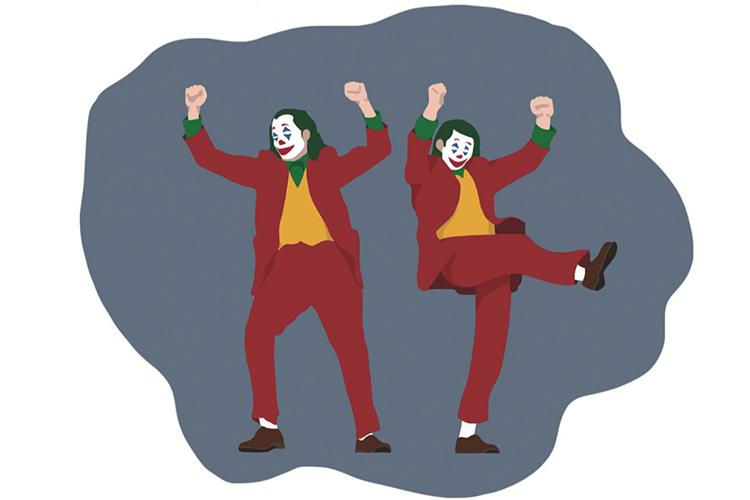“No Home Record”

Kim Gordon has reestablished her relevance in the alternative rock scene by using industrial noise to power her individual voice. Her October release and first solo album, “No Home Record,” features contemporary experimentation with a sound that breaks from the conventional expectations of a modernized Sonic Youth record. But is still reminiscent of the post-punk legend’s obsession with raw noise.
Sonic Youth was a pioneer of the avant-garde New York art scene, premiering on college radio stations and proving that middle-class art school alumni could popularize punk subculture. But after 30 years of fronting the no-wave band as a bassist, guitarist and vocalist with now ex-husband Thurston Moore, Gordon has moved forward as an artist through her newfound solo career.
“No Home Record” requires intentional listening so as not to get lost in the perpetual chaos that engulfs the album. Gordon refuses to be background noise, which is evident in her messy use of feedback and non-melodic vocals. The culture of Los Angeles, her hometown, is embodied in the album, symbolizing her transition from both New York and from her previous marriage; this allowed Gordon to claim her power as a solo artist.
The record opens with the somber droning of a guitar in “Sketch Artist,” a demolition of both audience expectations and the eardrums. This song features Gordon’s familiar falsetto as she delves into the obscure abstract style she experimented with as a member of Sonic Youth. Her raspy vocals are a stylistic choice; she sings as if someone were stepping on her diaphragm. She whispers over a bass track of manufactured noise that devours her repetitive lyrics, “And the wind chimes strike/Your dead stare strikes/ And the wind chime strikes/ (And your dead stare).”
The use of repetition is not new for Gordon. Her writing has always been simplistic in order to not distract from the emotional undertones of the music. She chants her lyrics in a cool monotone, preserving the aloof persona that she established when she was young in the punk scene. The musicality of the song emulates a churning of suppressed hypersensitivity, Gordon’s guttural reaction to the commercialization of her hometown. The bass track is anarchistic, refusing to conform to conventional hip hop influences. It’s also emulated through the standard trap beat underlying “Paprika Pony,” the third track of “No Home Record.” Her unorthodox approach to electronic sound demonstrates her views of the mainstream—though she has immersed herself in an environment rooted in formulaic structures and rhythms, Gordon prefers to break the rules.
The energy of the album evolves from solemn stoicism to an uncontrollable passion. “Murdered Out,” a pre-released single now found on “No Home Record,” is arguably the track that is the easiest to listen to. Gordon howls, “Turn me on,” in desperation over a building bassline that drives the song forward. The bassline provides consistency through the disarray of feedback, preventing Gordon’s lyrics from sinking into the unconventional buzzing of the guitar. She follows her plea with the realization of its consequences, “Murdered out of my heart/ Covered in black matte spray,” highlighting the increasing popularity of the ominous “murdered out” trend in Los Angeles where cars are drenched in matte black spray paint. As the song continues, the packaging begins to deteriorate, and the supporting instruments start to revolt behind Gordon’s consistent melody.
“No Home Record” is not ear candy, nor was it made to satisfy the audience’s expectations. If anything, this record is a reclamation of Gordon’s independence as she takes a step forward in her artistic journey. Her artistry is masked by sporadic noise, but there is intention behind the chaos. After having grounded her career in the success of Sonic Youth’s three-decade run, Gordon used her pre-established platform to remind the audience that art stems from individuality.
The record closes with Gordon’s social commentary on the commercialization of self-care in “Get Yr Life Back.” She rhythmically whispers, “With the violence/ In the plastic sign, you get your life back,” referencing an A-frame sign that was placed outside of a Los Angeles yoga studio. Her chilling articulation of the lyrics leave the listener to internalize a deep sense of paranoia, and a cloudy mess of ambiguous noise provides a platform for her repetitive melody.
“Every day, every day, every day,” she sings, the thumping of a washing-machine-like bass increasing in intensity as her voice carries a seductive drone. The music evaporates underneath her chanting, “I feel bad for you/ I feel bad for me/ Get your life back yoga.”
After nine songs of eruption and chaos, the listener is left with 20 seconds of withering feedback and a ringing in their ears.
—Review by Ruby Haack
“Joker”
Warning: Contains Spoilers

A wide grin spreads across Joaquin Phoenix’s patchy white-painted face as he stares into the mirror mounted on the wall of a dingy locker room. His red-stained lips part as a painfully deranged laugh struggles out from between his yellow, corroded teeth, signifying Arthur Fleck’s transformation into the Joker. For the first time, Batman’s cackling antagonist gets the spotlight all to himself. The result is both a blunder of misplaced intentions and a solemn reflection of the violence that upholds the structure of today’s divided society.
Director Todd Phillips’ past films make this disturbing crime thriller an unexpected shift. However, it may not be so much a direction change as a new perspective on his previous drunken comedic crusaders in “The Hangover” and “Due Date,” which focused on avoiding the realities of adulthood in a bleak world.
The lack of support for Fleck, a previous resident of a psychiatric hospital, and his similarly ailing mother, Penny (Frances Conroy), poses an eerie resemblance to our own society’s crooked priorities. Gotham embodies the toxic relationship between corrupt people in power—like Thomas Wayne—and the volatility and indignance that it cultivates in the oppressed.
Phoenix’s character reflects the contorted nature of their world—in his appearance—to an almost painful degree. Having lost a rumored 52 pounds for the role, he transformed into an emaciated shell of a man, with his shoulder blades protruding from his back and his rib cage pronounced by a hollowed stomach. Fleck is consumed by his obsession with a career in stand-up comedy and idolizes talk show host Murray Franklin, played by Robert De Niro.
The film and Fleck’s motivations seem to splinter off in different directions. A murderous outburst on the subway inadvertently sparks an uprising against the rich, oppressive oligarchs that Fleck has always despised, a man with a mentally ill, single mother. But from his delusional perspective—one capable of inventing a dangerously complex and realistic relationship with his neighbor Sophie (Zazie Beetz) that does not exist—those close to Fleck deceive him as well.
A trip to the Arkham State Hospital, in reference to the insane asylum from the comics, brings back memories of his abusive childhood that were erased by a particularly violent head wound. This confusion of offenses dilutes Fleck’s reasoning, which leaves the viewer wondering if this anticipated villain origin story is little more than a glorification of the recluse with homicidal potential that has been highlighted by our current media.
However, the character direction that Phillips takes here is not doomed to this arguably shallow fate. Yet another story of Martin Scorcese’s that “Joker” mirrors is that of the resentful and destructive loner Travis Buckle in “Taxi Driver,” whose disdain for the squalor of New York City in the ‘70s results in a violent outburst.
Bernard Herrmann’s eloquent jazz that dances through “Taxi Driver’s” similarly anti-heroic progression fits the film well. In contrast, the use of pop star turned child sex offender Gary Glitter’s 1972 hit “Rock n’ Roll Part 2,” as Fleck dances wildly down a decrepit flight of stairs, is questionable.
His dancing alone garners separate recognition. An allegro of twisted limbs and uncomfortably gyrating hips would be expected to draw an audience. But Fleck is seemingly invisible in a society that cuts his social workers’ program and denies him medication.
However, Phillips spends too much time on his physicality, including at least four other scenes of the malnourished man—bones jutting out from exposed flesh as his delusions bleed into reality—when Fleck’s writhing movement is sufficient.
The cinematography from Lawrence Sher compensates for a weak plot, with transcendent subway scenes that perfectly capture the putrid grit of a morally rotten city. Sher’s bold filming unapologetically exposes Phoenix’s anamorphic expressions with well-placed extreme closeups capturing each of his grease-painted pores.
The viewer feels a nostalgic thrill as Fleck emerges from the other side of his internal rage brandishing a smeared smile, stringy green locks and a new name, the Joker. But a lack of subsequent events is a somewhat unsatisfying conclusion to a story that made a meek effort to appease the DC Universe canon. Although far surpassing the unexplainable flailings of Jared Leto’s portrayal in “Suicide Squad,” Phoenix nearly misses Heath Ledger’s effortlessly ominous and originless version in the “Dark Knight.”
Though the film has some distracting flaws, it is undeniably entertaining to watch. In the final scene, Fleck is held in an interrogation room in Arkham—awash with ethereal white light—conversing with a woman who, unbeknownst to her, will be his next victim. It is as though he has ascended to a villain’s heaven, the possibility of absolution extinguished with a trail of cigarette smoke. Fleck chuckles grimly with a sickening look in his eyes. When she asks, “What’s so funny?” he smiles as if laughing at some unattainably tragic joke. “You wouldn’t get it.”
—Review by Nora Janowski ♦






































